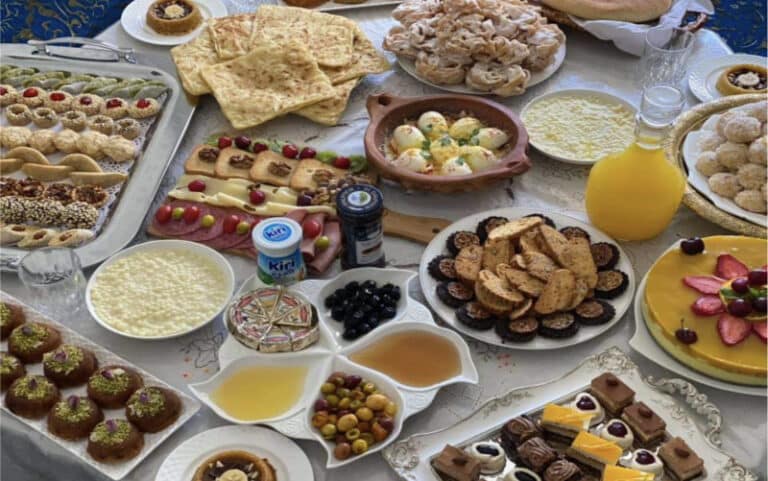Aid Seghir Feast: 5 Traditional Moroccan Dishes to Try During the Eid al-Fitr Celebration
Aid Seghir, also known as Eid al-Fitr, is a significant religious festival celebrated by Muslims worldwide. It marks the end of Ramadan, the holy month of fasting. During this festive occasion, Moroccan families gather to share meals, exchange gifts, and celebrate the end of a month of discipline and spiritual reflection. One of the essential aspects of this celebration is the food, and Moroccan cuisine is known for its unique blend of flavors and spices. In this article, we will explore the traditional Moroccan dishes that are commonly prepared during Aid Seghir.
Couscous:
Couscous is a staple dish in Morocco and a must-have during Aid Seghir. This classic dish is made by steaming semolina grains and serving it with meat or vegetable stew. The meat can be lamb, beef, or chicken, and the vegetables typically include carrots, turnips, onions, and chickpeas. The dish is seasoned with a blend of spices, including cumin, paprika, turmeric, and coriander. Couscous is often served on a large platter and is meant to be shared by the whole family.
Pastilla:
Pastilla is a sweet and savory pie made with layers of thin pastry sheets, chicken or pigeon meat, almonds, and spices. The meat is cooked with a blend of cinnamon, ginger, and saffron, then mixed with scrambled eggs and shredded phyllo dough. The pie is topped with powdered sugar and cinnamon, giving it a unique flavor that is both sweet and savory. Pastilla is a labor-intensive dish that requires patience and skill to prepare, making it a special dish reserved for festive occasions like Aid Seghir.
Harira:
Harira is a traditional Moroccan soup made with chickpeas, lentils, and tomatoes. It is typically served as a starter during Aid Seghir to break the fast. The soup is flavored with a blend of spices, including ginger, cinnamon, and turmeric, giving it a unique flavor that is both savory and spicy. Harira is also known for its nourishing properties, making it an ideal dish to replenish the body after a month of fasting.
Msemen:
Msemen is a type of Moroccan flatbread that is typically served during Aid Seghir. It is made by kneading flour, semolina, and oil into a dough, which is then rolled out into thin, circular shapes. The bread is then cooked on a griddle and served hot with honey, butter, or jam. Msemen is a popular breakfast food in Morocco and is often enjoyed with a hot cup of tea or coffee.
Chebakia:
Chebakia is a sweet and crispy pastry made with sesame seeds, honey, and spices. It is a popular dessert during Aid Seghir and is often served with mint tea. The pastry is shaped into intricate flower patterns and then deep-fried until golden brown. Once fried, it is soaked in a honey and rosewater syrup, giving it a sweet and floral flavor.
Aid Seghir is a time of celebration and gratitude, and Moroccan cuisine plays a significant role in this festivity. The dishes served during this occasion reflect the unique blend of flavors and spices that are synonymous with Moroccan cooking. From couscous and pastilla to harira, msemen, and chebakia, the food served during Aid Seghir is a testament to the rich cultural heritage and traditions of Morocco.

